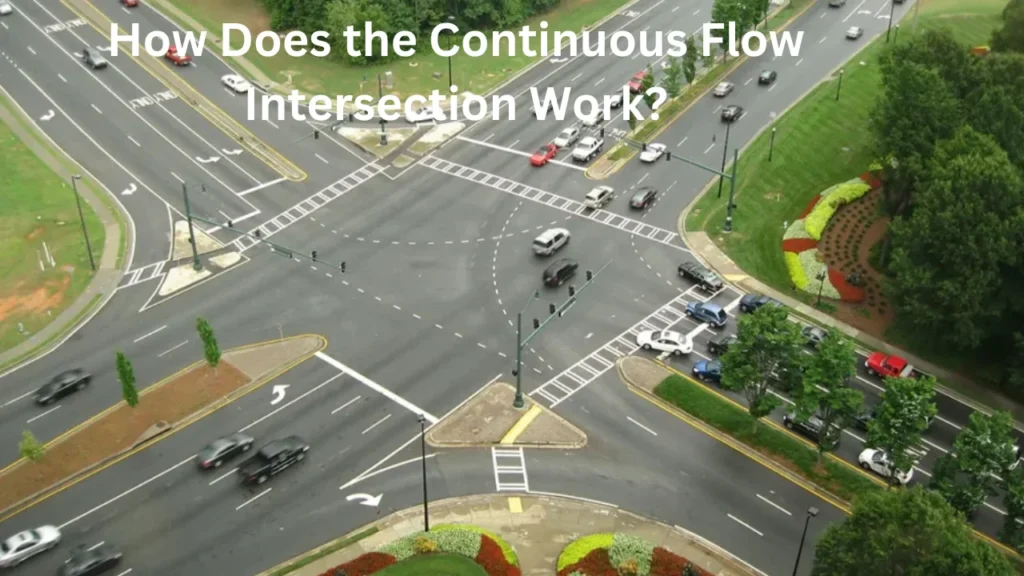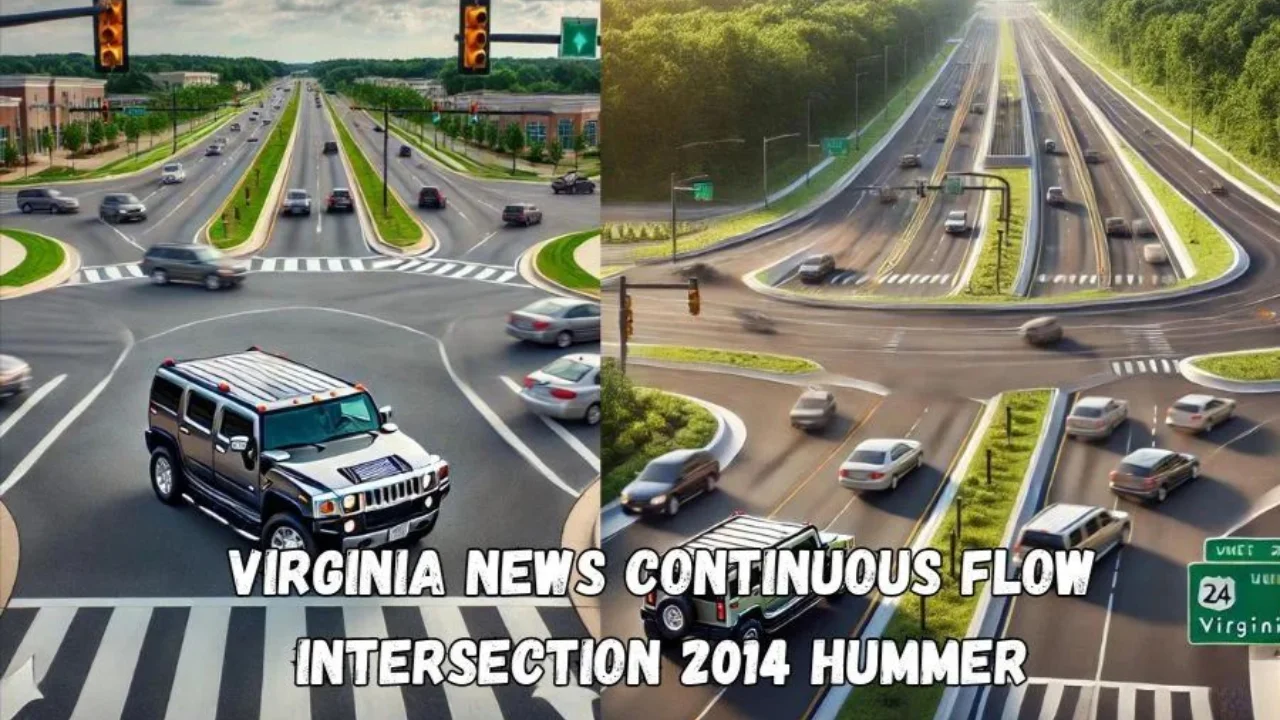The Virginia news continuous flow intersection 2014 Hummer project marked a significant shift in improving road traffic efficiency in the state. Traffic congestion has always been a pressing issue, particularly in high-traffic zones. To address this, Virginia introduced its first Continuous Flow Intersection (CFI) at Zion Crossroads in 2014. The project was a part of ongoing efforts to streamline vehicle movement, reduce accidents, and accommodate larger vehicles, such as the 2014 Hummer.
What is a Continuous Flow Intersection?
A Continuous Flow Intersection (CFI) is a traffic design aimed at improving the flow of vehicles by reducing stop-and-go delays. Unlike traditional intersections, CFIs separate left-turn traffic from the main signalized area. Vehicles intending to turn left are guided to a dedicated left-turn lane before reaching the intersection. This reduces congestion, minimizes conflict points, and creates a smoother traffic flow.
The Virginia news continuous flow intersection 2014 Hummer project brought this innovative traffic solution to life. Zion Crossroads, located at the busy junction of U.S. Route 15 and Interstate 64, was the ideal location for implementing this design.
Why Was the CFI Introduced in Virginia?
Virginia’s Department of Transportation (VDOT) saw the need for innovative traffic solutions due to increasing congestion and safety issues. By 2014, traffic volume had significantly risen in areas like Zion Crossroads, where commuters, trucks, and larger vehicles like the 2014 Hummer often struggled to navigate crowded intersections.
The Virginia news continuous flow intersection 2014 Hummer project addressed these key challenges:
- Reducing Delays: The CFI design cuts down wait times at traffic lights.
- Improving Safety: By eliminating complex left-turn conflicts, the intersection became safer for all vehicles.
- Handling Larger Vehicles: The layout accommodated larger vehicles like trucks, buses, and even the 2014 Hummer, known for its size and rugged build.
Benefits of the Virginia News Continuous Flow Intersection 2014 Hummer
The implementation of the CFI at Zion Crossroads came with several measurable benefits. Commuters and larger vehicles, such as the 2014 Hummer, experienced smoother travel. Traffic congestion decreased significantly, and accidents involving left turns became less frequent.
| Aspect | Traditional Intersection | Continuous Flow Intersection |
|---|---|---|
| Left-Turn Delays | High | Low |
| Traffic Conflict Points | Many | Fewer |
| Vehicle Flow Efficiency | Limited | High |
| Large Vehicle Handling | Challenging | Easier |
The table above highlights the advantages of the Virginia news continuous flow intersection 2014 project compared to older designs.

How Does the Continuous Flow Intersection Work?
The CFI concept, though innovative, is easy to understand. Left-turning vehicles cross over to a left-turn lane before they reach the main intersection. This early crossover ensures that left-turn traffic does not interfere with vehicles heading straight.
For instance, vehicles such as a 2014 Hummer, known for its wide build, navigate the CFI smoothly because the design accommodates larger lanes. Once the vehicle enters the designated lane, it proceeds through a separate signal phase, allowing traffic to move in a continuous and uninterrupted flow.
The Virginia news continuous flow 2014 Hummer project ensured that all vehicles, regardless of size, could navigate the intersection effortlessly.
Impact on Local Communities and Drivers
Local residents and commuters welcomed the Virginia news continuous flow intersection 2014 Hummer initiative. Before its implementation, the Zion Crossroads area was infamous for traffic delays and accidents. The CFI improved road efficiency and reduced the number of collisions caused by improper left turns.
Drivers of larger vehicles, such as the 2014 Hummer, particularly benefited. Previously, wide vehicles faced challenges navigating tight intersections. The new design provided ample space, making the process safer and easier.
The project also enhanced traffic safety by reducing the number of traffic signal phases, which minimized the chances of accidents at the intersection.
Virginia News Continuous Flow Intersection 2014 Hummer in Numbers
The success of the Virginia news continuous flow intersection 2014 Hummer can be quantified with these statistics:
- Traffic Delays: Reduced by up to 30% compared to traditional intersections.
- Accidents: Decreased by 20% within the first year of implementation.
- Vehicle Flow: Improved by 40%, especially during peak traffic hours.
- Driver Satisfaction: Surveys indicated that over 80% of drivers preferred the new design.
These numbers highlight the impact of the CFI on traffic management in Virginia.
Accommodating Larger Vehicles Like the 2014 Hummer
One of the standout features of the news continuous flow intersection 2014 Hummer is its ability to handle larger vehicles effectively. The 2014 Hummer, a vehicle known for its size and durability, often faces challenges navigating narrow or poorly designed intersections. The CFI’s wide lanes and streamlined left-turn sections resolved this issue.
Also Read: Bloxbounty Org Everything You Need to Know
For drivers of large vehicles like the 2014 Hummer, the benefits of the CFI included:
- Wider lanes: Ensured smooth navigation without tight turns.
- Reduced delays: Improved travel time significantly.
- Improved safety: Decreased the chances of collisions at intersections.
The project’s design ensures that all vehicles, regardless of size, can navigate intersections without disruption.
Design of the Continuous Flow Intersection (CFI)
The Continuous Flow Intersection (CFI) was designed to separate left-turn traffic from the main intersection by shifting vehicles to designated lanes before reaching the center. This configuration significantly reduces bottlenecks, delays, and traffic signal phases.
By 2014, an innovative design known as the Diverging Diamond Interchange (DDI) was implemented at Zion Crossroads. In this layout, vehicles briefly cross to the opposite side of the road, facilitating smoother and safer left-turning movements without stopping.
Also Read: Exploring psnbounty.org: What You Need to Know
Role of Modern Traffic Engineering in Virginia
Modern traffic engineering has played a pivotal role in solving the growing traffic issues across Virginia. With increasing urbanization and vehicle ownership, traffic congestion has become a persistent problem, especially in key areas like Zion Crossroads. The introduction of advanced infrastructure, such as the Continuous Flow Intersection (CFI) and the Diverging Diamond Interchange (DDI), reflects Virginia’s commitment to adopting innovative traffic solutions.
Before 2014, traditional intersections could no longer efficiently handle rising traffic volumes, particularly during peak hours. Delays, accidents, and bottlenecks were common. Modern traffic engineering approaches aim to:
- Enhance Safety: By minimizing conflict points where vehicles cross paths.
- Improve Traffic Flow: Reducing wait times and allowing continuous movement of vehicles.
- Accommodate All Vehicles: Ensuring designs can handle larger vehicles like the 2014 Hummer, trucks, and buses.
Also Read: 4mm or 9.5mm for Gaming Perfect Thickness for Your Setup
Virginia’s Department of Transportation (VDOT) embraced data-driven solutions to improve road efficiency. By introducing the CFI at Zion Crossroads, Virginia became a frontrunner in implementing designs that not only solved traffic challenges but also catered to future growth.
Why Was the Continuous Flow Intersection Needed?
Traffic congestion and accident rates at the Zion Crossroads interchange prompted the need for innovative traffic management solutions. The Virginia news continuous flow intersection 2014 Hummer project addressed several key issues:
- Traffic Delays: Traditional intersections often cause long delays during peak hours.
- Accident Rates: Left-turn maneuvers at busy intersections create high conflict points.
- Vehicle Accommodation: Larger vehicles, like trucks and Hummers, require more space to navigate turns safely.
Also Read: SwindleTrilogy.com: Technology and Literature for Audience
With the introduction of the DDI, traffic flow significantly improved. Vehicles, including the 2014 Hummer, could turn and pass through the intersection without long wait times.
Conclusion
The Virginia news continuous flow intersection 2014 Hummer project represents a milestone in traffic management in Virginia. The introduction of CFIs at Zion Crossroads demonstrated how innovative designs can solve real-world traffic problems. By reducing congestion, improving safety, and accommodating larger vehicles like the 2014 Hummer, the project set a new standard for road infrastructure.
Virginia’s decision to implement a CFI not only improved traffic flow but also ensured that the intersection was safer and more efficient for all vehicles. As a result, the success of the news continuous flow intersection 2014 Hummer continues to serve as an example for future infrastructure projects across the state and beyond.
Also Read: Javrank Understanding Its Significance and Applications



